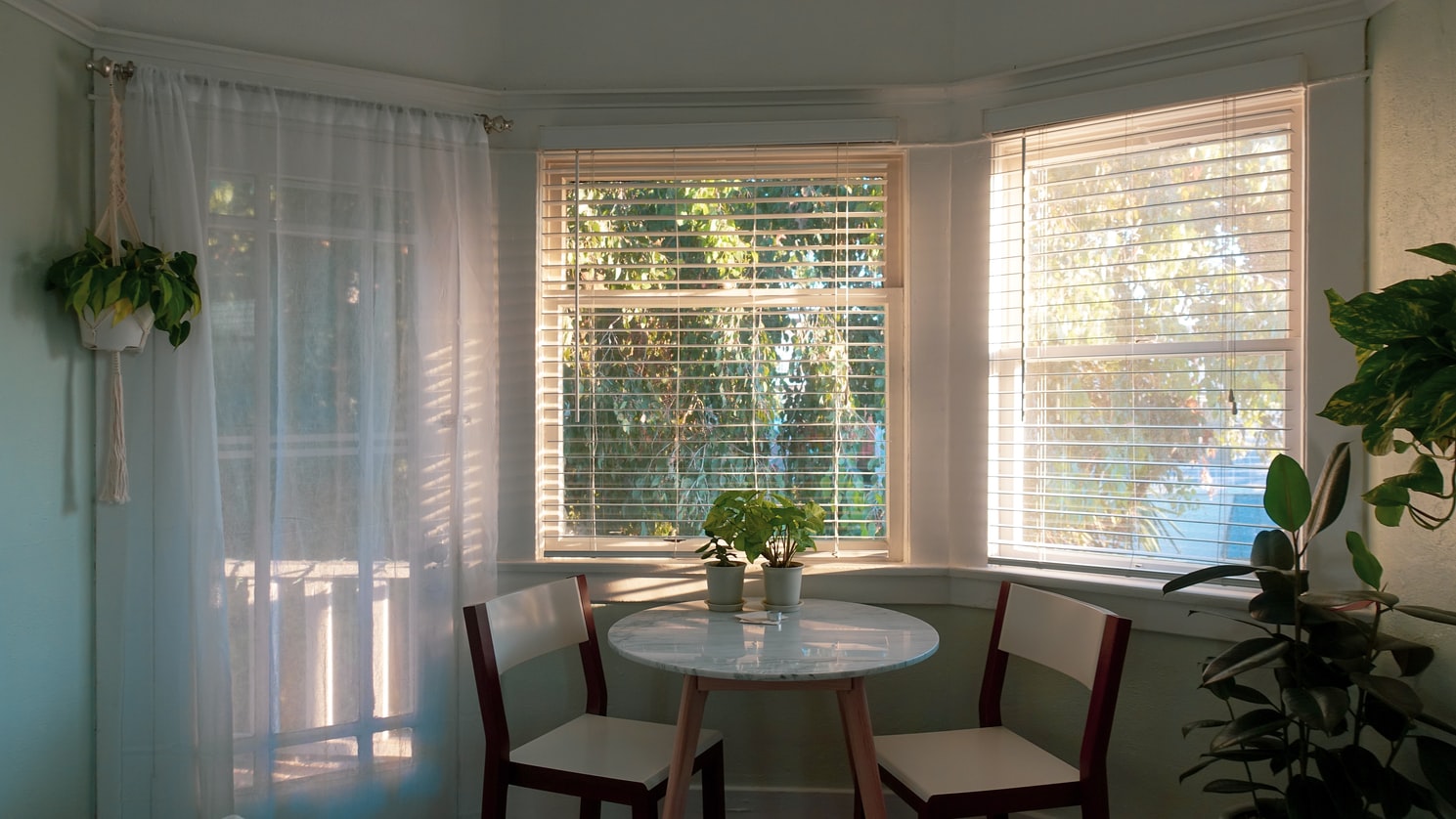Blinds vs. Shades
BLINDS VS. SHADES – WHICH IS RIGHT FOR YOUR HOME?
Blinds and shades serve a similar purpose – to control light that enters a home and to ensure privacy for those living in it. Still, that does not make them interchangeable. Each has its own advantages, and what you ultimately decide to install will depend on what is most important to you and your family, whether that be design, privacy, energy efficiency, or another factor. First consider which of the factors on this list are more relevant to your specific needs, and then use it to decide whether you should install blinds or shades in your home or a combination of both.
UTILITY AND CONVENIENCE
Home is meant to be an easy, carefree place, and so convenience is a factor when determining whether to purchase blinds or shades. They will, after all, be used just about every day. Blinds take this category for us because of one simple consideration – they are adjustable. Certain types of shades are adjustable and can be set at different heights between fully open and closed, but we find that this is no substitute for blinds that can be rotated and adjusted with ease allowing varying amounts of light to enter a home while also controlling your level of privacy. This is convenient and important at times when the sun’s light can be especially intrusive or you just may not want to be seen by the outside world.
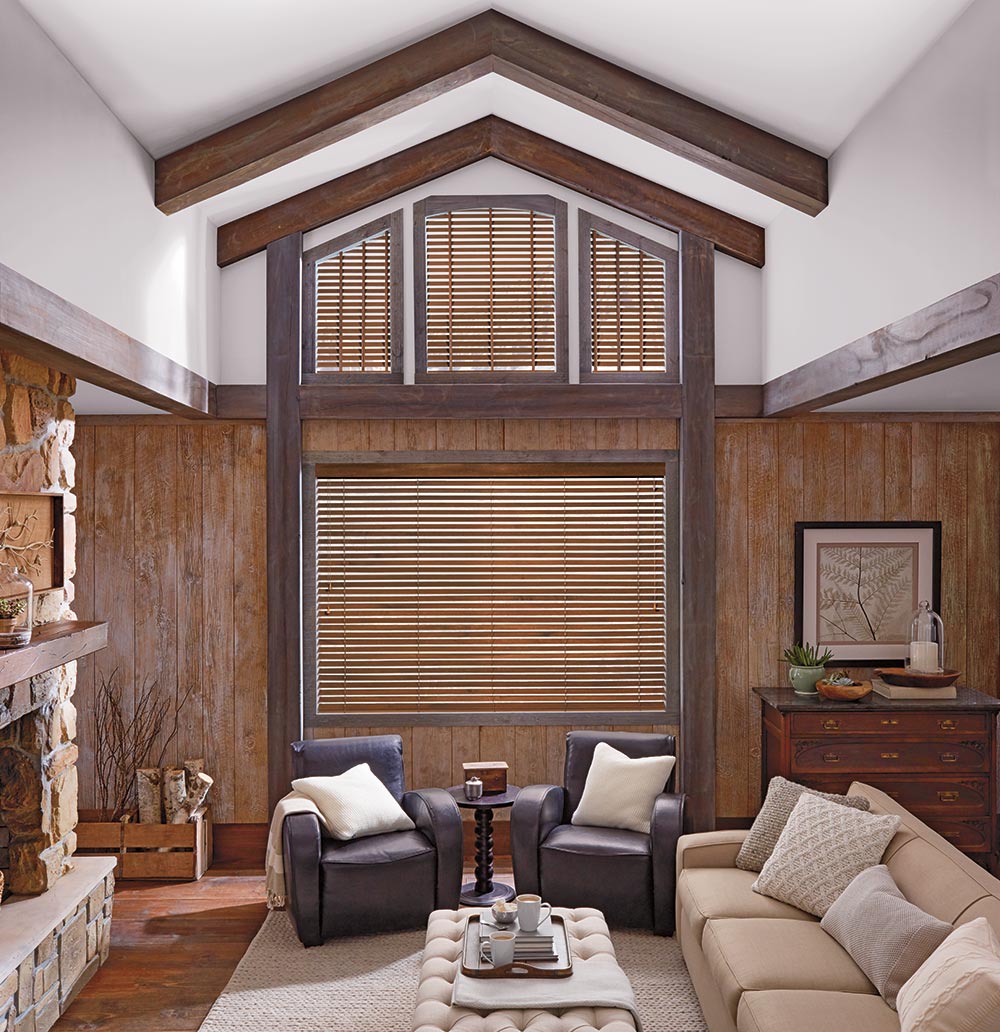
Hunter Douglas Parkland Wood Blinds
The Parkland® wood blinds by Hunter Douglas are a modern take on the natural beauty of wood blinds. Created from real wood, these blinds will give your home a warm and inviting accent that is hard to rival. By having the ability to rotate, Parkland® wood blinds can manage both light and privacy without being raised. Schedule an appointment to see us in person and see the full array of colors and textures that Hunter Douglas Parkland® wood blinds are available in!
Aesthetic and Design
We spend a great deal of time in our homes and in many ways they are an extension of ourselves. For this reason, the look and feel of a room should be considered. Shades are typically chosen by those who value design because there are many style options, colors, and fabrics to choose from. A window shade serves a function, but it can also enhance the style or décor of a particular room because of the fact that fabric is typically what most shades are made of. It is the softness of a fabric that differentiates it from a blind that is more often made of wood, aluminum, vinyl, or faux wood. A set of carefully selected shades can fit the aesthetic of an eighteenth-century gem just as well as it can match a home created in the modern style. Because blinds are more limited in this way, they force a reliance on other design aspects like furniture and décor in order to create appeal in a space.
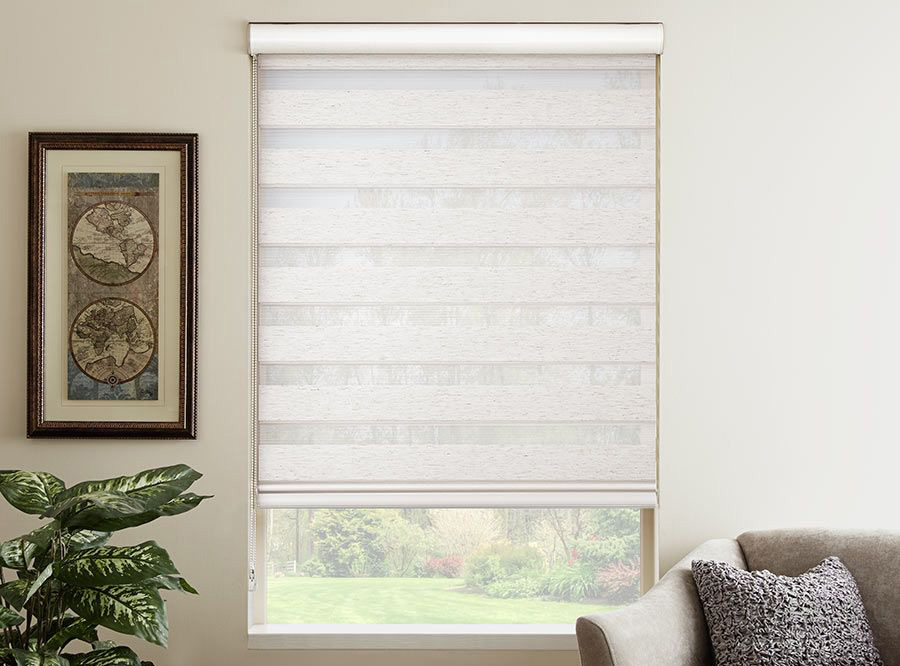
Durability
Any time that a homeowner makes a purchase for their home, a simple question comes up: “How long will these last?” The consensus about the durability of blinds and shades will always be dependent on their environment. A home with pets and kids cannot expect things to last the way an empty nester can hope for.
Shades will perform well when used properly and they will begin to show their age as the years go by. The biggest challenge that shades face is keeping them clean. Any fabric shade has fibers that are capable of holding on to dust and pollen as it floats through the air unbeknownst to us. This will accumulate over many years and tend to dull and “grey” out the color and appearance. Vacuuming your shade and also using your shade will help minimize the dust accumulation and give them a longer life. Ultrasonic cleaning is a great option and effective way to clean your shades and ensure a life well beyond ten years.
Blinds are always thought of as a more durable product because of what they are made of. A wood blind or a faux wood blind will always look stronger than a soft fabric shade, and that is because it is. It is more likely to be able to stand up to the abuse given by a pet or child. More important than anything is the fact that a blind can be wiped clean of a child’s handprint or a barking dog’s saliva. It is the ability to clean a wipeable surface that can be important to someone who wants a clean home and a window treatment that will have a long life.
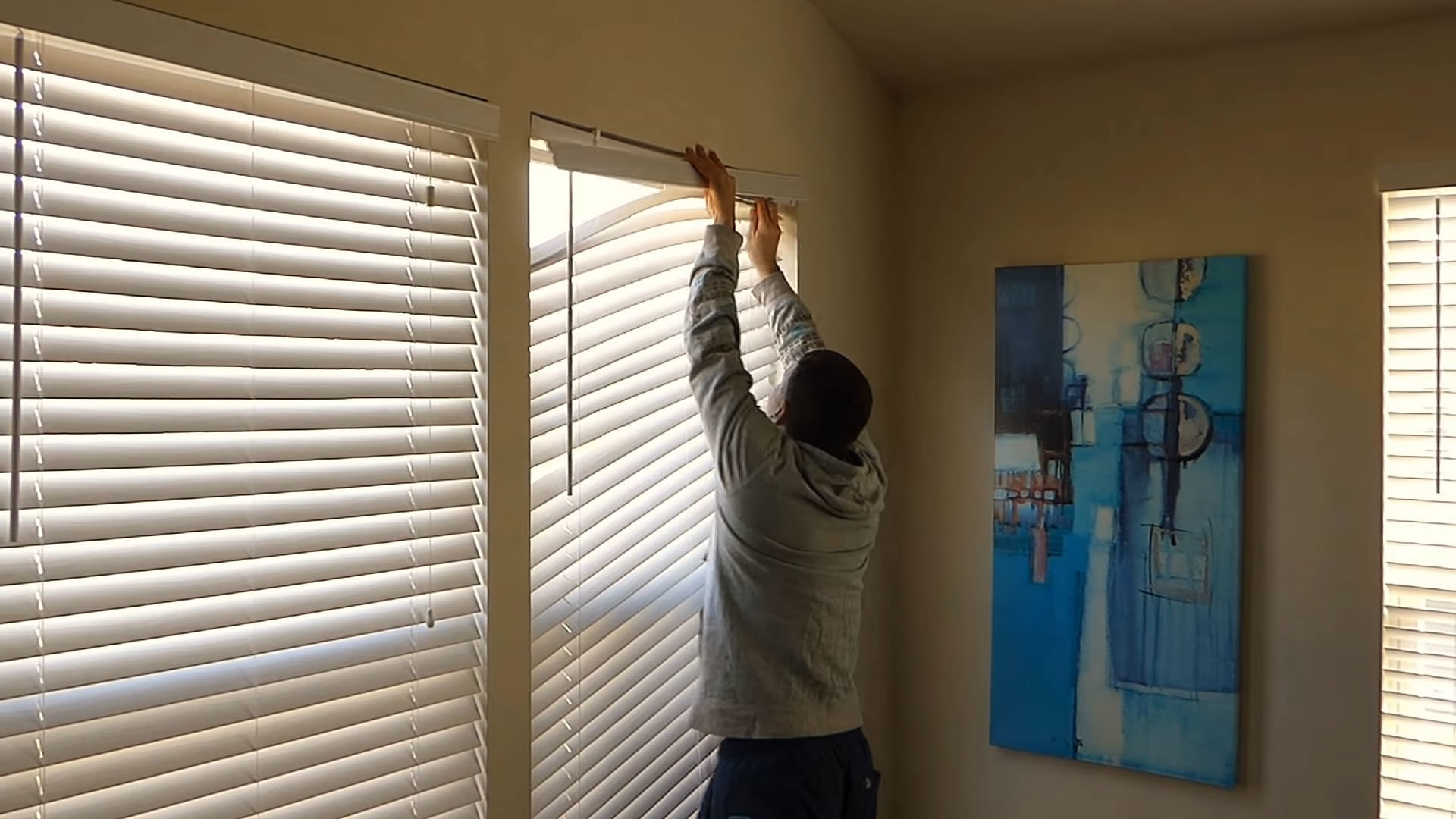
Installation and Maintenance
How a blind or shade is going to fit on a window or door has a lot to do with the ultimate decision of which product to use. We all want the treatment to provide privacy, and they will do that. It is the installation that can make a big difference and be a determining factor when choosing the proper treatment. Many of our Long Island homes are getting up there in years and because of that, the windows may have been replaced. These new windows are often double or triple pane that gives great insulation from the outside elements but rarely leaves much room for us to hang a new blind or shade. Combine a nice new window with some decorative moldings and trim and we may face the challenge of trying to fit our new window treatment “inside” the window. This may limit the options due to a shallow depth in the window, but the good news is that there are often some options of both blinds and shades that can be used. It is the guidance of a window treatment specialist that is so important for helping you make the right decision and understanding the options available to you.
Maintenance will vary widely between various blinds and shades, however; one belief will always hold true – a clean house will have clean window treatments. Anyone who has had horizontal blinds knows how dusty they can get. No fun cleaning all of those slats. Whereas, a vertical blind will give you virtually no work as they are virtually maintenance-free. Those with fabric shades should use the vacuum occasionally as there is not much that can be done to prevent the shades from eventually showing their age. When you open your windows and let in the outside dust and dirt, it would be wise to move your blinds and shades out of harm’s way so you don’t speed up the process.
Pricing
While the cost of labor for the installation of blinds and shades is about the same, it is fair to say that fabric shades will be more costly than blinds. Blinds are often made of less expensive material – wood, vinyl, aluminum or faux wood and that will result in a lower cost. Fabric shades have a higher cost for their raw materials so one can understand why they will cost more than blinds. Roman shades, for example, are more costly because of their unique appearance, their manufacturing process, as well as the high-quality fabrics that they are made from.
Energy and Warmth
The energy-related needs of homeowners cannot be more diverse. Some seek in their homes to retain as much heat as possible, while others are more concerned about keeping their homes cool. In some areas of the world, homeowners experience both of these needs as the seasons change every year! This is where we Long Islanders’ fit in. We must deal with a pretty harsh winter as well as a potentially hot summer. This is why proper blinds or shades can make all the difference in the world.
Hanging a blind or shade on a window will complement the window and its energy efficiency. Even hanging a bedsheet on a window will help insulate the house. But we want to do it with a little more style than a bedsheet and provide functions that will make you want to use your treatment all the time. Shades have been known to be the better insulator due to their multiple layers of fabric often used in their construction. The cellular shade is the best available on the market with up to four layers of fabric providing the highest R-values attainable from a window treatment. Although blinds may not insulate quite as well as shades, they are a close second that do offer more versatility. A shade is only effective when it is covering the window and in the down position. . A blind allows the user to adjust the slats to their liking, allowing someone to see outside while still achieving a certain level of insulation and energy efficiency.
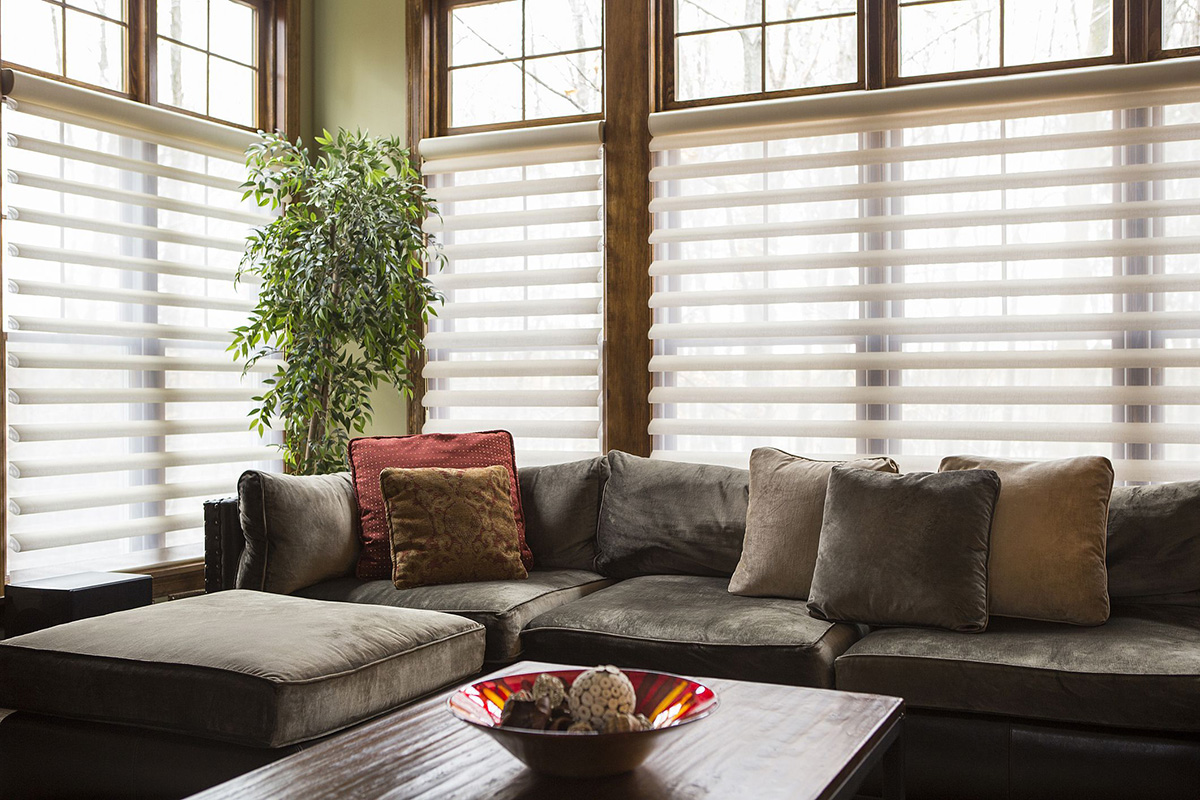
Privacy and Safety
Privacy is important to many families, and the right blind or shade can either let the world in or keep it at bay. Blinds can be closed just as well as a shade to create ultimate privacy, but they will also reduce the amount of light coming in through that window. A great feature where light control is desired, particularly in bedrooms. Fabric shades have the unique advantage that they will provide privacy in the closed position while still allowing a soft filtered light through the shade itself. The most appealing part of a fabric shade is the softness and elegance that it gives as light passes through the fabric.
Safety is not to be overlooked when it comes to window treatments. Cords can be very dangerous when not used properly by adults allowing young children to get tangled in them and possibly leading to strangulation. An even bigger threat is the safety of pets as they are often unsupervised for many hours at a time. Thankfully, there have been several laws passed in the last decade that have reduced the number of accidents by not allowing dangerous corded products onto the market. Cordless shades and blinds have become the new norm for both their safety as well as their neater appearance and ease of use. The improvements in battery-operated motorization have increased their popularity and also provide another safe option with the elimination of cords. All custom window treatment manufacturers follow the guidelines created by the Window Covering Association of America to provide a safe and worry-free product to consumers.
Ultimately, the choice between blinds and shades should come down to which of these factors are more central to the needs of each homeowner. We have many customers who use both in their homes, because their needs differ from one room to the next. We will be happy to share our expertise and experience with you to help guide you through the process of selecting the proper window treatment. Visit our showroom in Farmingdale or call to set up a free shop-at-home appointment and allow us to share our knowledge with you.



